A heritage past its welcome?
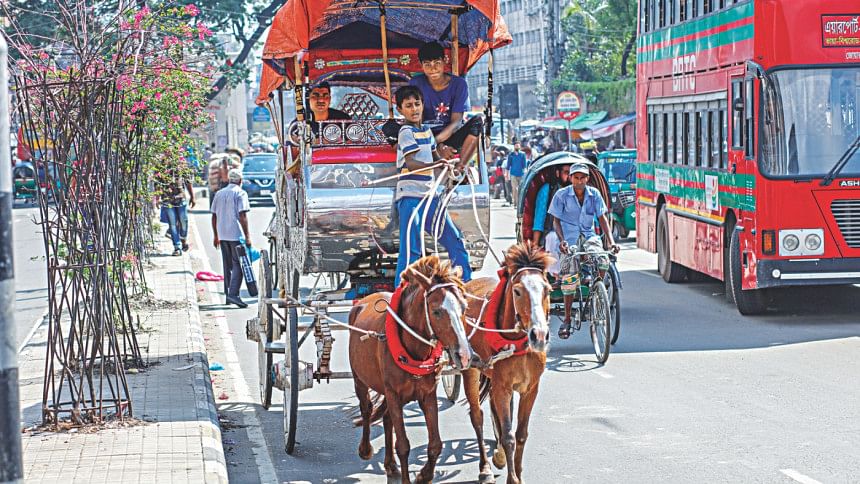
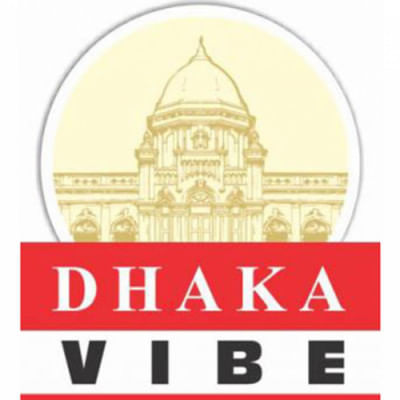
Dhaka, like any 400-year-old city would, has gone through a metamorphosis over the course of its illustrious and fascinating history, as have the lives of its inhabitants.
From the Mughal rulers and local zamindars, to British colonial overlords, and past the Pakistan time to independent Bangladesh, daily life practices have evolved over the centuries to make way for newer technology and development. Yet, in pockets -- literal and figurative -- of the old town here and there, parts of that history and heritage have remained encapsulated.
To come across a mode of public transportation introduced over a century and a half ago -- and one that has probably become a novelty decades ago all across the globe -- can be quite odd to the uninitiated.
Yet, from the capital’s Gulistan to Sadarghat Road, that is exactly what one would find on an everyday basis.
Some 30-odd horse-drawn carriages still carry passengers on the route, in a striking juxtaposition to the traffic hustle and bustle of one of the most densely-populated cities in the world.
While it provides the livelihood of a handful of families and eases commuting for some, animal rights groups challenge its necessity in the 21st century, particularly as there are questions about the wellbeing of the animals.
According to the book “Dhaka – A Study in Urban History and Development: 1841-1921”, GM Shircore – an influential Armenian businessman living in Dhaka at the time – first brought the horse carriages, or tikka gari, as a mode of public transportation in the mid 19th century. The number continued to grow, and by 1889, the number of horse-drawn carriages stood at around 600.
However, with the availability of motorised vehicles, that number naturally fizzled out.
Currently, most horse carriages in operations are part of family lineage. Rubel, a coachman, said, “I have been involved in this business for around fourteen years. My father brought me to this profession, who also came through his father.”

Raju, another coachman, said, “We charge Tk 20 for a person for one trip [from Gulistan to Sadarghat]. At a time, eight to twelve passengers can board the cart. On a good day, we earn about Tk 1,500-2,000.”
The elderly people and women make the majority of passengers who use this service. “It is a fun and hassle-free journey, and suitable for women like us. We are unable to get into a bus due to heavy crowding,” said Sajeda Khan, who regularly commutes on the route.
The carts are also frequently hired for wedding parties, carrying the groom and his entourage to the wedding venue.
“We get between Tk 4,000 to Tk 10,000 depending on distance,” Raju told this correspondent recently.
About the costs of running the service, Raju said the major cost is the horse’s fodder -- grass, paddy husk, wheat and peas.
“Our horses eat grass worth about Tk 100 every day. We also need five sacks of paddy husk, wheat and pea for every ten days, that costs around Tk 4,000- 4,500,” he said.
Other costs include treatment of horses as they sometimes become sick, Raju added.

Asked what happens to a horse when it is no longer capable of pulling carts, Md Salauddin, a lineman of the service, said, “Firstly, we arrange treatment for it. If it is not able to work, we have to free the animal in an open space outside the city.”
Further asked what happens then, he said the horses die there.
A few months ago, one such horse was found abandoned in Hatirjheel, and rescued by animal welfare organisation Care for Paws, who took the aged horse to its shelter on the outskirts of the capital.
Despite their best efforts to feed and treat it, the horse, lovingly named Jheel by the rescuers -- died there of old age a few days later -- according to founder of the group Zahid Hussain on Facebook.
People for Animal Welfare Foundation, another animal rights group, yesterday organised a human chain in front of Jatiya press Club, demanding formulation of a guideline to protect rights of the workhorses until the “inhumane” practice can be banned, finding rehabilitation for the horses and alternate livelihood of families involved in the profession.
Founder of the organisation, Rakibul Haq Emil, told this newspaper, “These horses are not fed properly, or treated when they fall sick. There is no stable for the horses, and they are kept under a flyover, susceptible to the elements.” He further said each carriage weighs around 400kg, as stainless steel has replaced wood as the material. One carriage owner has even put a TV and air-conditioning in his “luxury” cart, Emil said, adding that it puts immense physical load on the horses.
Furthermore, because of the traffic jam on the road, the coachman has to repeatedly pull the leash and hit the horse to control it, which is cruel, said Emil.
“We understand that horse carriages are a heritage of Old Dhaka, but we want to question whether it is a necessary one in this day and age,” he said, adding that the newly-formed Animal Welfare Act has provisions about the right treatment of a working animal, but its enactment is yet to be implemented as the rules of the law are still being formulated.

 For all latest news, follow The Daily Star's Google News channel.
For all latest news, follow The Daily Star's Google News channel. 

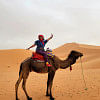
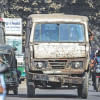


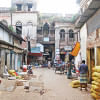


Comments